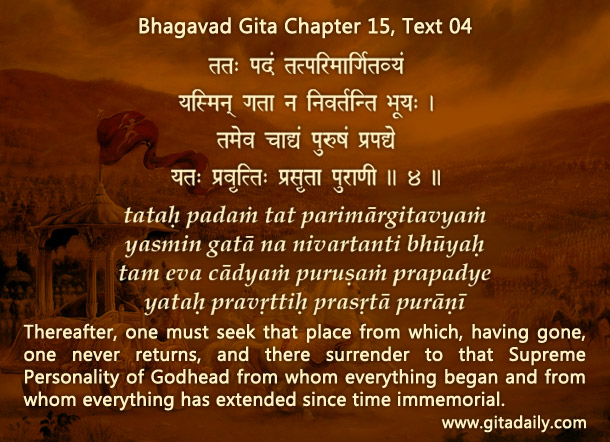Some spiritualists think that the ultimate spiritual reality is the impersonal non-differentiated oneness known as Brahman. Such people sometimes pay cursory tribute to the Personal Absolute, deeming it a tool to transcendence that the spiritually unevolved need.
The Bhagavad-gita acknowledges the existence of the Brahman effulgence, but qualifies its prominence. It states that this impersonal effulgence rests on the personal Absolute, the all-attractive person, Krishna (14.27). The primacy of personality in the arena of spirituality is reiterated in the Gita (15.04): after we use the weapon of detachment to disentangle ourselves from illusory material existence, we need to surrender to the Supreme Person from whom everything has emanated.
How does this verse convey the paramount position of the Personal Absolute? In three ways.
- It refers to the Personal Absolute not as a tool for disentangling ourselves from illusion but as the object to be attained after being disentangled.
- It indicates that the Absolute is not an object to merge into, but a person to surrender to. Surrender requires that both its object and its subject be persons. And as we are told to surrender even after being disentangled from illusion, the personal object of surrender exists beyond the arena of illusion.
- It declares that the Personal Absolute is the source of everything, implying that there’s nothing beyond him that we use him to go to. Rather, he exists beyond everything, including the impersonal effulgence.
This Gita revelation about the primacy of personality echoes our deepest intuition. What brings the greatest fulfillment to our heart is love. And love requires the existence of two distinct persons who choose voluntarily to relate and reciprocate. Thus, the deepest longing of our existence points to the highest reality in transcendence – the all-loving and all-lovable Supreme Person.

To know more about this verse, please click on the image
Explanation of article:
Podcast:
Audio Player
pl keep it up